Explore the Best AI Image Gallery

The Art of Integration: How Wearable Tech is Redefining Creative Expression
The intersection of art and technology has always been a fertile ground for innovation. Today, wearable technology stands at the forefront of this convergence, blurring the lines between the physical and digital realms and redefining how we create, experience, and interact with art. From interactive installations to personalized artistic expressions, wearable tech is empowering artists, designers, and consumers alike to push the boundaries of creativity.
A New Canvas for Artistic Exploration
Wearable technology provides a unique canvas for artistic expression. Devices like smart glasses, haptic suits, and motion-tracking sensors allow artists to translate physical movements, emotions, and sensory experiences into interactive artworks. Imagine a sculpture that responds to the viewers touch, or a painting that evolves in real-time based on the wearers heart rate. These immersive experiences blur the lines between observer and participant, inviting audiences to become active collaborators in the creative process.
Augmented Creativity: Enhancing Artistic Possibilities
Wearable tech also enhances existing artistic disciplines. Musicians can now incorporate real-time data visualizations into their performances, creating mesmerizing visual symphonies that respond to the music. Dancers can use motion sensors to choreograph intricate routines that interact with digital environments, pushing the boundaries of stage design and performance art. For architects and designers, wearables offer a way to visualize and manipulate 3D models in immersive, hands-on environments.
Beyond the Studio: Democratizing Creativity
One of the most exciting aspects of wearable tech is its potential to democratize creativity. With affordable devices and intuitive interfaces, individuals without formal training can now experiment with art and design in new and exciting ways. Mobile apps allow users to create personalized avatars, design their own clothing patterns, or even compose music using voice commands. This accessibility empowers everyone to express themselves creatively, regardless of their technical expertise.
Ethical Considerations: Navigating Uncharted Territory
As wearable tech becomes more integrated into our lives, its essential to consider the ethical implications. Privacy concerns arise when devices collect personal data, such as biometric information and movement patterns. Transparency about data usage and user control over their information are crucial for building trust and ensuring responsible innovation. Additionally, we must be mindful of the potential for bias in algorithms that power creative tools. Its important to promote diversity and inclusivity in the development and deployment of wearable tech to ensure that it benefits everyone equally.
Future Trends: A Glimpse into Tomorrow
The future of wearable tech in the creative industry is brimming with possibilities. We can expect to see:
- More Immersive Experiences: Wearables will continue to push the boundaries of immersive art, blurring the lines between reality and virtuality.
- Personalized Creativity: AI-powered tools will enable users to create highly personalized artworks that reflect their unique styles and preferences.
- Collaborative Creation: Wearable tech will facilitate real-time collaboration between artists across geographical boundaries, fostering a global creative community.
- Seamless Integration: Wearables will become seamlessly integrated into everyday objects, transforming our surroundings into interactive art spaces.
As wearable technology evolves, it promises to empower individuals, inspire creativity, and reshape the very fabric of artistic expression. By embracing its potential while addressing ethical concerns, we can unlock a future where art and technology converge to create a more vibrant and inclusive world.



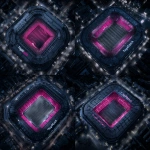
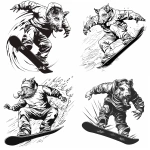

](https://images.ai-img.art/thumbnails/150/fc468fe14407b96489933a55227127071fd5f6c0505be74ca4dcb2f1e2fa3771.webp)






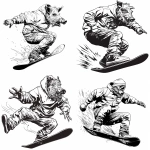





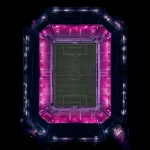

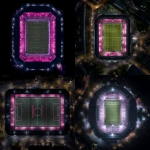
](https://images.ai-img.art/thumbnails/150/57afc09cc38edf73880f760b7ebe1852c5522c6b4051836717b2e56b6f7f913c.webp)
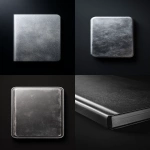







](https://images.ai-img.art/thumbnails/150/738b292720ee21b57673dfb75ad851f4c34d16f5006ae3027ba685feaddb6b04.webp)



](https://images.ai-img.art/thumbnails/150/807ac97f95d56e8cc7cf714e13299d80bf6bcb5b4d80b77a7f06f30246184943.webp)
](https://images.ai-img.art/thumbnails/150/69d81ae5ecde297f3c11da78435c5fc00fbac7b00e2c7ccd89d7bbeb014e0541.webp)


](https://images.ai-img.art/thumbnails/150/05b3252b3f681226a3df9027b069db31c005f91b72257a74367c4102f03a2ba0.webp)
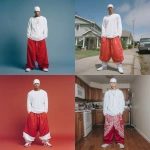
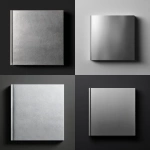
](https://images.ai-img.art/thumbnails/150/3ccc82ef0ad0cc1ab1dfb5b8e6bc37924fcad45dadf41cbd1cb21d19fc7f640a.webp)
](https://images.ai-img.art/thumbnails/150/908bcb9950a44fd4b37d1a84cf00178988cea9507738d7ad4f92707c692461ef.webp)

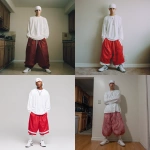
](https://images.ai-img.art/thumbnails/150/83ec831b9fb19e0db5a520b051b9556f3f594b87acc957ffee094a06a565e6f0.webp)